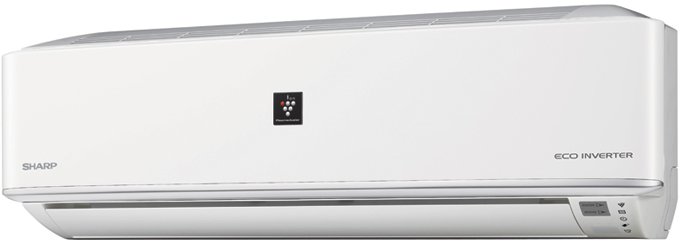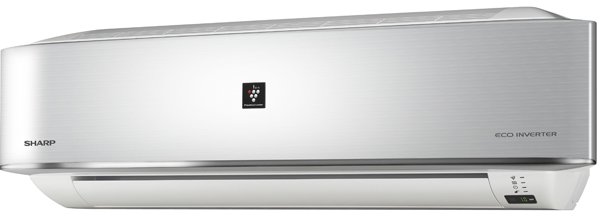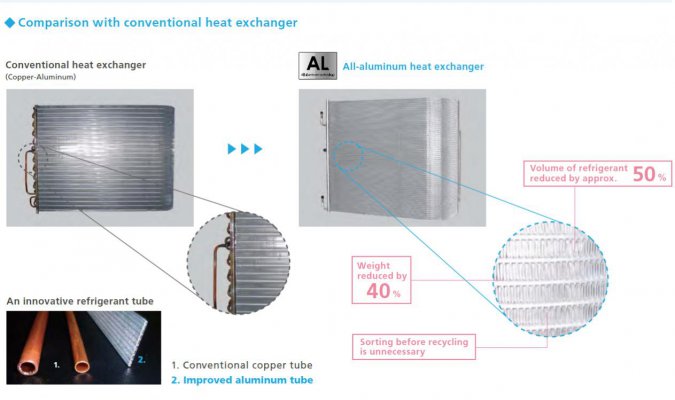Rishiguru, prtk and all other, I desperately seek some advice from all you guys regarding my AC installation. I have already ordered two 1.5 Ton inverters for my rooms, one Sharp and other Hitachi. I was really lucky with the Hitachi since it was old stock but completely sealed so got it for fifty thousand instead of the fifty five thousand market prices. Sharp cost me forty five thousand. Charges include brackets and installations.
Since I have opted for installment scheme, I have the liberty to buy another 1 Ton for another room which will be used infrequently. Please advice me whether to opt for 1 ton inverter or non inverter. Can anyone tell me some good Hitachi 1 ton models with personal experience? Rishiguru since you advised to install sharp in the room with prolong usage, I will thereby go for sharp in my parents room with the Hitachi in our room due to my frequent traveling exercise.
Vinay you speak of a room where a 1 Ton air conditioner will suffice, you ask for suggestion and as per me you should opt for Inverter air conditioner no matter wheteher it is going to be used infrequently or not. Let us do some comparisons of prices and performance of a Hitachi non-Inverter with a Sharp Inverter. Lowest quote I got in Kolkata:
Hitachi Kaze Plus with Koukin Air Filter,
1 Ton, 4-Star (Model No: RAU412HTD):
INR 31.5K
Sharp Eco-Inverter with in-built Plasmacluster Ion Air Purifier,
1.1 Ton (Model No: AH-XP13NRV):
INR 31.5K
Prices above include kit + installation + ODU brackets. I believe it is better to go the Inverter way. Let us compare their performance specs:
Hitachi RAU412HTD
Rated Cooling Capacity: 3.52 kW
Rated Power Consumption: 1070 watts
Rated EER: 3.29 W/W
Refrigerant Gas: R22
Sharp AH-XP13NRV
Cooling Capacity Range: (0.9 - 3.6 - 4) kW
Rated Cooling Capacity: 3.6 kW
Power Consumption Range: (250 – 1150 – 1400) watts
Rated Power Consumption: 1150 watts
EER Range: (3.6 - 3.13 – 2.86) W/W
Rated EER: 3.13 W/W
Refrigerant Gas: R410A
From specs I find the Sharp Inverter to be a clear winner, and that too at no additional extra price!!!
Reasons:
1) The Sharp Inverter has a higher cooling capacity (max: 4 kW) to able to cool bigger rooms than the Hitachi non-Inverter (max: 3.52kW) or an identical room faster.
2) While the non-Inverter Hitachi will always consume 1070 watts of power when compressor is running, Sharp with its Inverter technology will vary its power consumption from as high as 1400 watts under full cooling capacity for the first few minutes and then hover down to around 1150 watts providing its rated cooling capacity. When the set temperature is achieved it further reduces power consumption gradually and goes down to as low as 250 watts i.e. the minimal cooling capacity it requires to maintain the set temperature. In other words Sharp will save you a lot of power and be much kinder to your electric bills if used on a prolonged basis later on.
3) The Hitachi non-Inverter have a rated cooling performance EER of 3.29 (W/W) where as Sharp just manages 3.13. This just shows half the picture as Inverters have variable cooling capacity and power consumption. Therefore their EER also varies. The Sharp 1.1 Ton EER ranges from as low as 2.86 under full load to as high as 3.6 under part load conditions where it remains max of the time under operation. This means the overall working efficiency of the Inverter is way higher than the Hitachi non-Inverter.
4) Hitachi uses R22 refrigerant gas, which will be gradually phased out from 2013, where as the Sharp uses more environment friendly, more performance oriented and much more efficient R410A.
5) The installation kit provided by Sharp is currently the best out there.
All in all I find the Sharp Inverter to be a clear winner in comparison to identically priced Hitachi non-Inverter.
Some points to note while buying the Sharp 0.8 Ton and 1.1 Ton Inverters:
1) These does not come under the AH-XPxxMV range which simply put are technological showpieces and the best Sharp Inverters available in Asia except Japan. The 0.8 and 1.1 Ton comes under AH-XPxxNRV range which is a little compromise between out-an-out performance of the AH-XPxxMV and very good performance they offer at a competitive price. The reduced price helps them to compete in the fierce 1 ~ 1.2 Ton Indian air conditioner market with cut throat competition.
2) AH-XPxxNRV range does not use the premium quality huge indoor unit used by the 1.5 Ton (AH-XP18MV) and 2 Ton (AH-XP24MV). For example the Digital display showing current power consumption in kilo-watts along with classy sparkling silver finish with stainless steel color lining are all gone. But I have seen them in flesh and can guarantee they are very close in terms of looks and product quality to the AH-XPxxMV range and can be easily compared with equivalently priced Hitachi & Daikin air conditioners.
3) The outdoor units of 0.8 and 1.1 Ton AH-XPxxNRV range does not implement all-aluminum canalicular tubed, more performance oriented, duarble & costly condenser of 1.5 & 2 Ton AH-XPxxMV range. Instead they uses conventional and cheaper copper-aluminum circular tubed condenser variant followed by its competitors Hitachi & Daikin. Result is drop in cooling performance and efficiency in AH-XPxxNRV range in comparison to their top AH-XPxxMV range. Suppose the 1.1 Ton AH-XP13NRV can do a rated EER of 3.13, while the 1.5 Ton AH-XP18MV have a much higher EER of 3.66.
4) No matter what Sharp compromised in terms of performance compared to the AH-XPxxMV range, with a killer price of 31.5K all included, Sharp AH-XP13NRV, 1.1 Ton Eco-Inverter with in-built Plamacluster Ion air purifier simply
USURPS any 1 ~ 1.2 Ton premium non-Inverter’s of similar pricing.
Below are few shots I took of
Sharp AH-XP13NRV, 1.1 Ton Inverter while visiting various dealers:
Indoor Unit from different Viewing angles
Common White Color with matte silver lining
The famous Digital display showing current power consumption of AH-XPxxMV series are replaced with LED indicators here. Cost cutting!!!
Enjoy!!!














